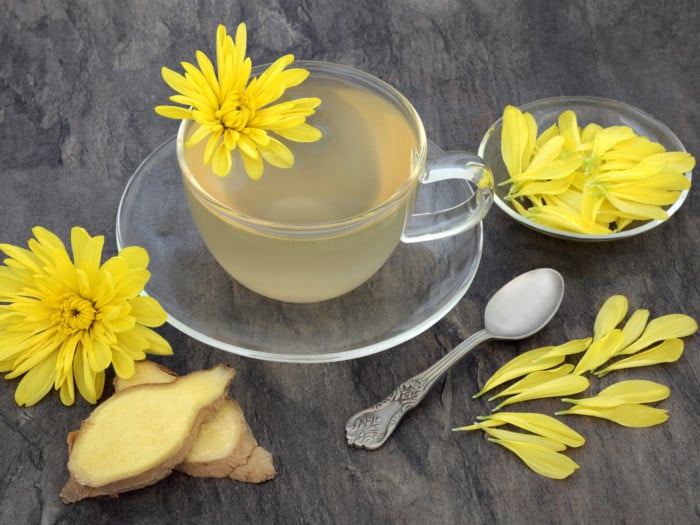Infusions are a great way to add an interesting twist to your otherwise simple cup of tea. Infusion teas are traditionally black or green tea mixed with the infusion of a particular fruit, flower, or herbal product. It is a process by which a flavoring agent (tea bags, or any plant matter) is dipped into the solvent (hot water) and allowed to steep for some time till the flavors get properly immersed.
The two most common methods of tea preparation are infusion and decoction. Unlike decoction, infusion doesn’t require the plant matter/flavoring agent to be heated or boiled as it steeps. The resulting beverage may not be as strong, but it ensures proper extraction of flavors and consequently a better taste. Having said that, sometimes some plant matter like tree barks, roots or fruits may require you to subject them to more heat, as that is necessary to efficiently extract the flavors. In such cases, a decoction is necessary.
How to make Infusion Tea?
It is quite a simple process to make infused teas. This form of tea preparation is also known as brewing. The steps include:
- Step 1: Take plant matter in a cup (dried leaves, fruits or flowers) and pour hot water over it. You can also add a tea bag to hot water.
- Step 2: Allow the plant matter or tea bag to steep in water until the flavor is fully extracted.
- Step 3: Finally, remove the plant matter or tea bag before drinking it.

Chrysanthemum tea is a flower-based infusion beverage that has a number of health benefits. Photo Credit: Shutterstock
Different Types of Infusion Tea
The different types of tea under this category include:
Herbal Infusions
While herbal infusions are easy to prepare, you need to steep them thoroughly. To make an herbal infusion, add a teaspoon of dried herb of your choice to a cup of boiling hot water and ensure that the herbs are completely covered with it. Thereafter, allow the infusion to steep until the water cools to room temperature. If you are making an herbal infusion using barks or roots, you will require a longer steep time of almost 8 hours. Use a fine-mesh strainer or a small piece of cheesecloth to strain the herbs and your cup of herbal infusion is good to go!
You can try out our Parsley tea and Rosemary tea recipe, which are the perfect examples of herbal tea infusions.
Fruit Teas/ Tisanes
Fruit teas are teas with natural fruit essence. In the tea world, they are infusions that come in different fruit flavors and are also known as tisanes. They are filled with vitamins, antioxidants, and minerals. You also get the decaffeinated version. They are sometimes a healthy replacement for fruit juices as they contain fewer calories. You can either make a fruit-infused iced tea or a fruit-flavored hot tea.
To make fruit teas, you can choose a good quality black or green tea that is devoid of any added flavors. You can either use a tea bag or a teaspoon of tea leaves. The best variants of fruit tea are sweet and strong in taste and are usually made with apricots, peaches, watermelon, strawberries, raspberries and so on. It is fairly simple to make.
- Step 1: Whichever fruit you choose to use, wash it well and cut it into small pieces.
- Step 2: In a heatproof glass jar, add in the tea leaves or tea bag and pour in boiling water. Let it steep for 3-4 minutes and then remove the leaves once done.
- Step 3: Leave the fruit pieces in the tea so that they infuse well in water and then cover the jar. Allow it to infuse for 10 minutes and then strain out the fruit.
- Step 4: Pour the fruit tea into mugs if you wish to serve it hot, or else chill it for half an hour to have it cold.
Try out some of our fruit tea recipes such as Passion fruit tea and Strawberry tea style recipes.
Flower Infusions
Flower infusions can be had hot or cold. To make flower-infused teas, you can combine the flowers (both, fresh or dried) with 8 ounces of boiling water in a heatproof glass jar. Allow it to steep for 15 minutes and then add a natural sweetener of your choice like honey or stevia to enhance the flavor. Check out our Dandelion tea, Blooming tea, and Hibiscus tea recipes.
Important Tips To Make Infusion Teas
- Steep time is important as the flavor of the tea entirely depends on it. Steeping for less time will not bring about the flavor of the tea while over steeping may result in the concoction becoming bitter. Different tea infusions have their recommended steep time. Follow it to the tee.
- There is nothing known as an ideal taste. How strong or light your tea should be, depends on your individual taste altogether. Follow the recommendations step-by-step while making a tea of your choice and then experiment and adjust the taste to your liking. Instead of spending more time making tea, you can use more tea leaves. This way you will get a strong cup of tea without the risk of making it bitter.
- Avoid using aluminum vessels to make the infusion tea as the metal would react with the tea and make it toxic.
- Different types of tea need a different temperature to bring out the right flavor. The stronger the tea, the higher the temperature.
